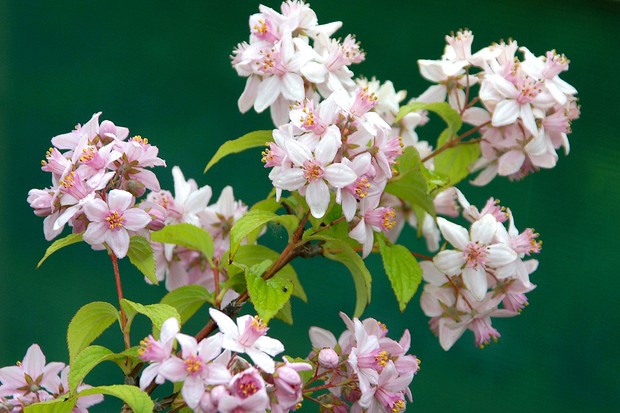
Pruning plants in summer is just as important for some plants as winter pruning.
By pruning in summer, you can reap the rewards of better displays from ornamental plants. You’ll also encourage bigger crops from fruit trees and bushes. Removing new summer growth before it turns woody reduces growth-promoting nitrogen, allowing potassium to build up – and more potassium means more flowers and fruit. You’ll also keep plants, such as shrubs, climbers and rambling roses, within bounds and maintain an attractive shape.
Find out which plants you need to prune in summer, below.
Spring-flowering shrubs
Shrubs that flower on stems formed in the previous year need to be pruned in summer, after flowering. They include:
Key tool: Loppers
How to do it: Remove any stems killed by frost to encourage strong new growth to grow from low down in the plant. It’s best to leave this until early summer when all risk of frost has passed. You could also use loppers.
Tender shrubs
Includes plants that can be damaged by late frosts, such as:

Key tool: Secateurs
How to do it: Prune after flowering to encourage strong new growth that will flower next year. Remove the oldest, woody stems right down to the base. You could also use secateurs, or a pruning saw for thick branches.
Fruit trees
Removing soft, new growth will promote fruit formation on:

Key tool: Secateurs
How to do it: prune out new excess growth. The aim is to create space that will allow more light and air in through the tree. This will help the fruit to ripen. You could also use loppers, a pruning saw or long-reach pruners. Read more about pruning fruit trees in summer.
Hedges and topiary
Cut back the current season’s growth to maintain shape. Shrubs to tackle include:

Key tool: Hand shears
How to do it: Clip slow-growing beech, hornbeam or box at the start and end of the summer. Trim fast-growing privet every six weeks. You could also use secateurs or topiary shears for small hedges. Read more about pruning beech and hornbeam hedges.
Climbers
Many climbers need to be summer pruned to keep their growth under control and stopping them outgrowing their allotted space. They include:

Key tool: Secateurs
How to do it: Prune back trailing stems, leaving just three to four leaves on the current season’s growth. The stems of climbers such as honeysuckle are short lived, so prune out some of these older stems to avoid a bare base with flowers only at the top. Then train in new growth to ensure there’s an even spread of flowers. Wisteria needs pruning twice a year, in summer and in winter.
Rambling roses
Rambling roses usually flower once in June. They can put on 5m growth in a year. Pruning after flowering, will help plants to flower well and avoid a tangled mess, with flowers high up the plant. Ramblers include:

Key tool: Secateurs
How to do it: Remove thin, dead, diseased or dying stems. Then take out branches that have outgrown their allotted space. Then choose a third of the oldest, flowered stems and cut them as low down on the plant as possible. Tie in new, vigorous shoots – these will flower next year. Prune back any sappy growth and shorten side shoots by a third. Watch our video guide to pruning rambling roses.
Evergreens
All evergreens are slightly tender and should not be pruned too early in the year, as stems will be vulnerable to frost damage. Early summer is the ideal time to prune them to maintain their shape, control their size and remove any frost-damaged stems. They include:

Key tool: Secateurs
How to do it: Remove around a third of the old wood, taking away any crossing and congested branches. Trim back new growth to reshape the plant and cut back any long, unproductive stems. Always cut back to just above a leaf joint or bud.
